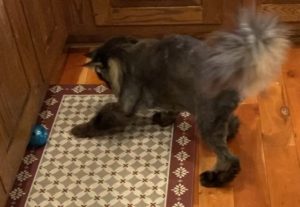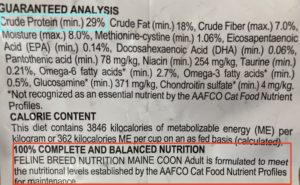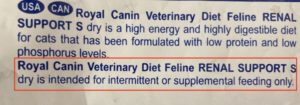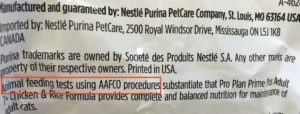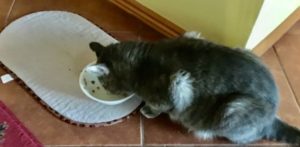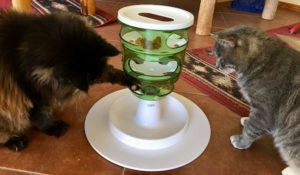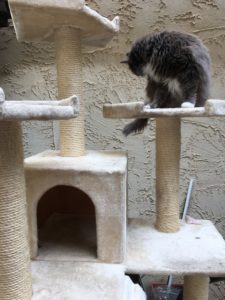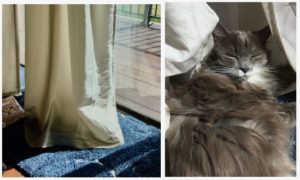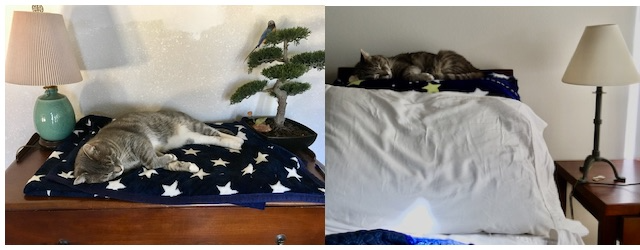How do you tell if your cat is fat?
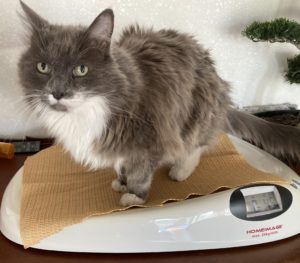
You can weigh her. The easiest way to do this is to purchase a baby scale. There are many brands online for purchase – check the customer reviews. You will not be putting the scale through the heavy use a veterinary clinic does, so one of the less expensive ones should work. I prefer the style that does not have a separate tray – these do not “tilt” if your cat backs up or steps on the edge.
But weight does not tell the entire story…
The Body Condition Score – how do you tell if your cat is fat?
- assigns a number between 1-9 to your cat
- uses your cat’s profile
- uses how much fat covers the ribs
- uses how big is the fat pad on her belly
- a score of 1 is skeletal
- a score of 9 is very overweight
- a score of 5 is JUST RIGHT!
The BCS ( Body Condition Score chart ) in 3 steps
- Look at your cat from overhead
- Look at your cat from the side
- Feel your cat’s ribs
Your Cat from Overhead – your cat should have a “waist” between the end of his ribs and his hips
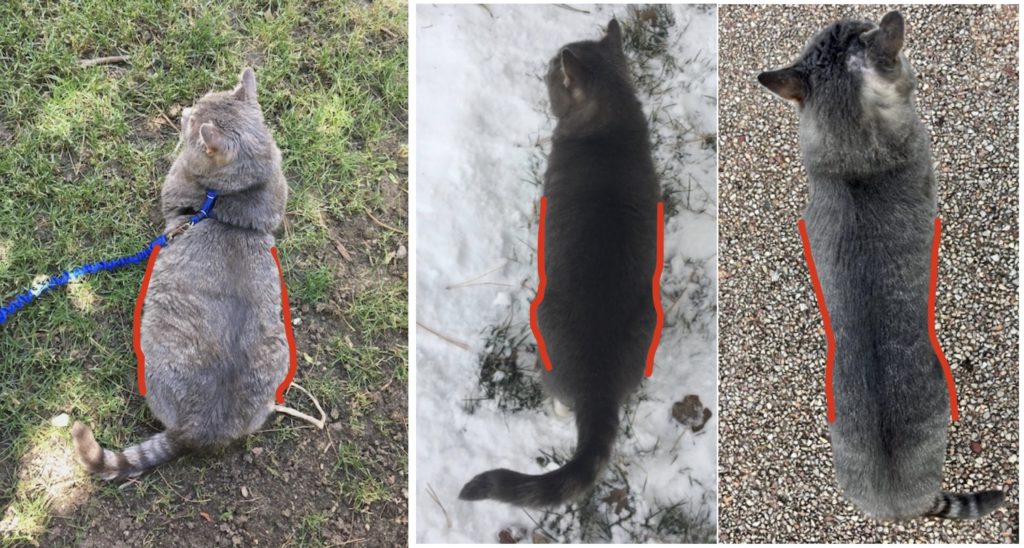
Your cat from the side – your cat should have a “tuck” when seen/felt from the side – this is separate from the loose flap of skin on the belly
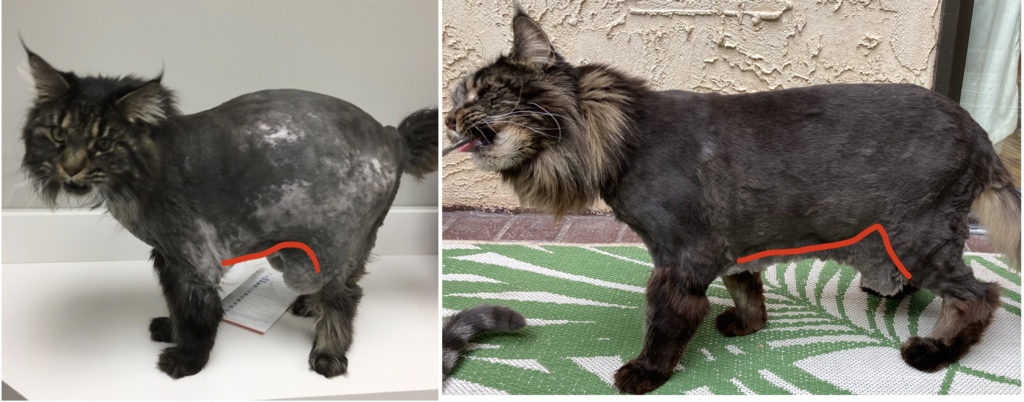
Feel Your Cat’s Ribs
- Feel your cat’s side with FLAT fingers – you should be able to feel her ribs; there will be small layer amount of fat
- If you have to “dig” (turn your fingers in ) a little, her score may be a 6 or 7
- If you can’t feel her ribs at all because of the fat covering, she is most likely a score 8 or 9 – she will have a rounded belly with an easily felt fat pad.
Muscle Condition – part of your cat’s body condition
How do you tell if your cat is fat? Check her muscle condition.
- Use your fingers to feel the muscle along either side of the spine.
- What you are feeling for is the thickness of the muscle.
- A healthy young cat’s back muscles will feel like the outer edge of the palm of your hand.
- As your cat ages or becomes sick, the muscles will thin out and feel more like the balls of your hands (MILD muscle loss).
- Further aging and disorders like chronic kidney disease can reduce muscle mass further. The muscle will feel more like the backs of your hands (MODERATE muscle loss).
- With very old or very sick cats, the vertebrae and pelvic bones become more pronounced and feel more like your knuckles (SEVERE muscle loss).

